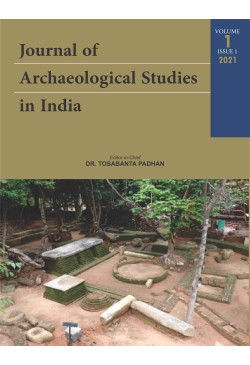JASIJournal of Archaeological Studies in India

Peer Reviewed Journal

Peer Reviewed Journal
A Study of Microlithic Assemblage from Kalangapali Site, Middle Ong Valley, Odisha, Eastern India
Barik, K., Padhan, T., Jhankar, S., Mishra, B., & Nayak, S.R. 2023. A Study of Microlithic Assemblage from Kalangapali Site, Middle Ong Valley, Odisha, Eastern India. Journal of Archaeological Studies in India, 3: 1, pp. 1-24. https://doi.org/10.47509/JASI.2023.v03i01.01
The Pashupata Philosophy: The Relationship between ‘Pashu’ and ‘Pati’
The Early Finds and Chronology of Terracotta Animal Figurines in Indian Archaeology
Geoarchaeological Investigations in and Around the Ancient Port Site of Nalasopara: A Preliminary Study
An Overview of the Neolithic-Megalithic Culture of Gufkral, Kashmir